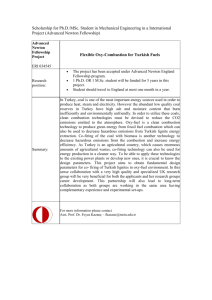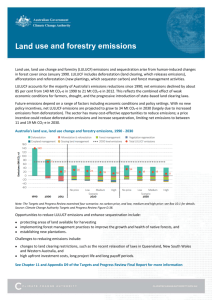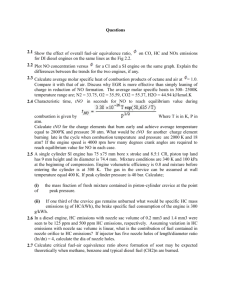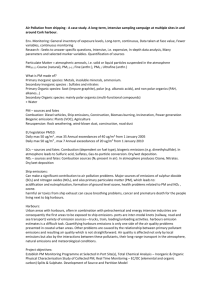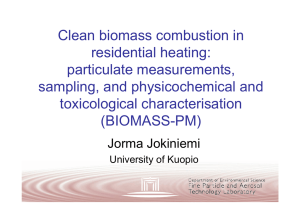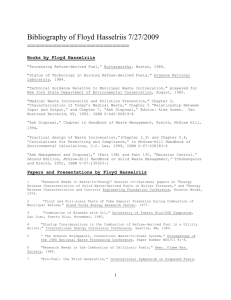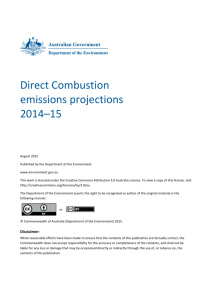Direct combustion emissions
advertisement
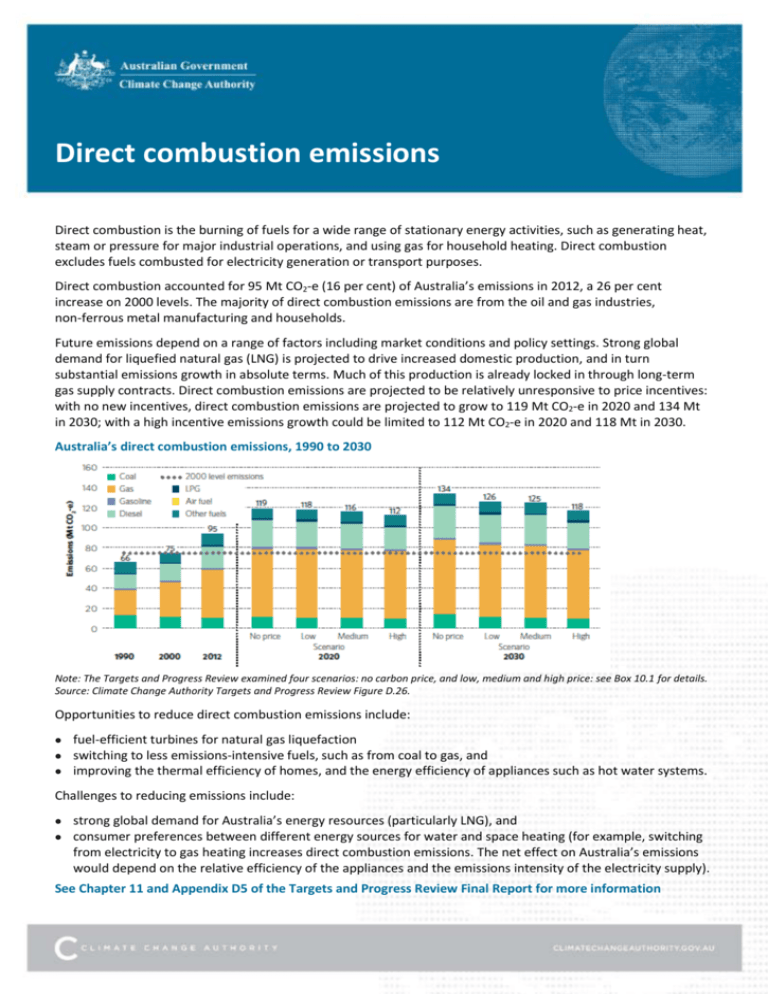
Direct combustion emissions Direct combustion is the burning of fuels for a wide range of stationary energy activities, such as generating heat, steam or pressure for major industrial operations, and using gas for household heating. Direct combustion excludes fuels combusted for electricity generation or transport purposes. Direct combustion accounted for 95 Mt CO2-e (16 per cent) of Australia’s emissions in 2012, a 26 per cent increase on 2000 levels. The majority of direct combustion emissions are from the oil and gas industries, non-ferrous metal manufacturing and households. Future emissions depend on a range of factors including market conditions and policy settings. Strong global demand for liquefied natural gas (LNG) is projected to drive increased domestic production, and in turn substantial emissions growth in absolute terms. Much of this production is already locked in through long-term gas supply contracts. Direct combustion emissions are projected to be relatively unresponsive to price incentives: with no new incentives, direct combustion emissions are projected to grow to 119 Mt CO2-e in 2020 and 134 Mt in 2030; with a high incentive emissions growth could be limited to 112 Mt CO2-e in 2020 and 118 Mt in 2030. Australia’s direct combustion emissions, 1990 to 2030 Note: The Targets and Progress Review examined four scenarios: no carbon price, and low, medium and high price: see Box 10.1 for details. Source: Climate Change Authority Targets and Progress Review Figure D.26. Opportunities to reduce direct combustion emissions include: fuel-efficient turbines for natural gas liquefaction switching to less emissions-intensive fuels, such as from coal to gas, and improving the thermal efficiency of homes, and the energy efficiency of appliances such as hot water systems. Challenges to reducing emissions include: strong global demand for Australia’s energy resources (particularly LNG), and consumer preferences between different energy sources for water and space heating (for example, switching from electricity to gas heating increases direct combustion emissions. The net effect on Australia’s emissions would depend on the relative efficiency of the appliances and the emissions intensity of the electricity supply). See Chapter 11 and Appendix D5 of the Targets and Progress Review Final Report for more information

